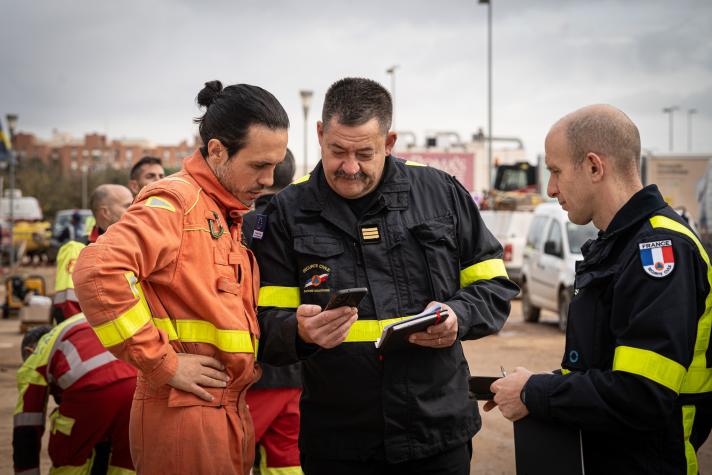In late October 2024, a high-altitude isolated depression (DANA in Spanish) struck eastern Spain, bringing severe weather, torrential rainfall, and flash floods. The disaster caused widespread damage and led to casualties: 224 people lost their lives, 13 remain missing.
In the immediate aftermath, satellite imagery maps for flood delineation and damage assessment developed by the EU’s Copernicus Emergency Management Service supported initial relief efforts on the ground. To date, more than 60 such maps have been produced.
Spain also requested emergency assistance through the EU Civil Protection Mechanism. In response, several EU countries quickly stepped forward, offering equipment and expertise.
Shortly after, teams from France and Portugal, comprising over 150 responders and 60 specialised vehicles, arrived in Spain to work alongside local emergency services. Together, they cleared debris, pumped water and mud, transported rubble, and supported other recovery operations.
Additionally, 2 liaison officers from the EU’s Emergency Response Coordination Centre in Brussels went to Valencia, ensuring real-time monitoring and a smooth flow of channelled assistance.
The flash floods in Spain severely impacted densely populated areas, taking a heavy toll on human life, the environment, and infrastructure.
Aerial assessments of the damage and needs have been crucial for effective response and recovery efforts.
At Spain’s request, the EU helped mobilise emergency assistance from France and Portugal.
To ensure a smooth coordination of this incoming aid, 2 EU liaison officers joined the recovery operations on the ground.
The French team consisted of 50 responders and 29 specialised vehicles, including excavators, lift trucks, loader tractors, and other.
The Portuguese team deployed 102 personnel and 30 vehicles, such as water pumping trucks used to clear sewage and drainage systems, and to remove water from blocked city tunnels.
In an emergency response, coordination is crucial.
Team leaders and appointed liaison officers from all teams involved in the recovery operations remained in close contact to ensure adequate resources for identified needs.
As the floods receded, they left behind broken tree branches, trunks, mud, and significant industrial waste.
The responders deployed through the EU Civil Protection Mechanism worked to clear the heaviest debris and clean up the area.
The force of water also swept multiple cars away. Many of them piled up, blocking roads and creating safety risks for passersby.
The French and Portuguese teams used heavy machinery to clear the debris
Members of local emergency services continued their work alongside EU teams, focusing on removing water, mud, rubble, and other waste. Joining forces helped accelerate the recovery efforts.
Despite the challenging conditions on the ground and further rainfall in the first few days of the mission, all the teams maintained high morale.
4 flags, 1 mission: delivering flood relief to the hardest-hit communities.
As climate disasters become more frequent, the EU continues to invest in strengthening Europe’s prevention, preparedness, and emergency response efforts.














